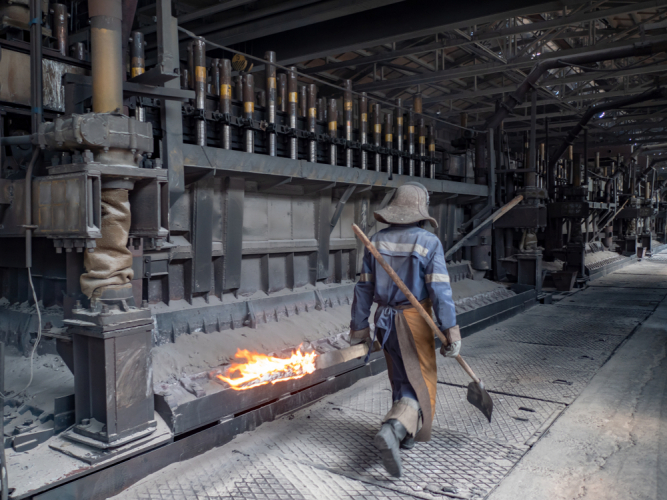Aluminium is an incredibly useful metal because it is both light and strong. In nature, we find it as aluminium oxide in rocks, and for a long time it was hard to extract aluminium metal from the oxide.
Electrolysis of molten aluminium oxide is the way we can do this.

We cannot do electrolysis on solids, and aluminium oxide does not dissolve in water. This means that we have to melt aluminium oxide for electrolysis to happen. The melting point of pure aluminium oxide is very high (over 2000ºC), but adding another mineral, called cryolite, reduces the melting point to about 1000ºC. This is helpful because it reduces the cost of the process.
Graphite electrodes are used, made of pure carbon. These are placed in the molten aluminium oxide/cryolite mixture. Then electrolysis starts.
Aluminium ions are attracted to the cathode, where they form aluminium atoms. The molten metal sinks to the bottom of the vessel, where it falls out and is collected.
Oxide anions are attracted to the anode, where they form oxygen. The oxygen reacts with the carbon electrodes, making carbon dioxide. This gradually destroys the electrodes, so they have to be regularly replaced.
Electrolysis of aluminium oxide is expensive because of the cost of heating the substance, and also due to the cost of the electricity needed for the process to happen. This makes aluminium expensive, which is why it is so important to recycle it.
Let's have a go at some questions now.

